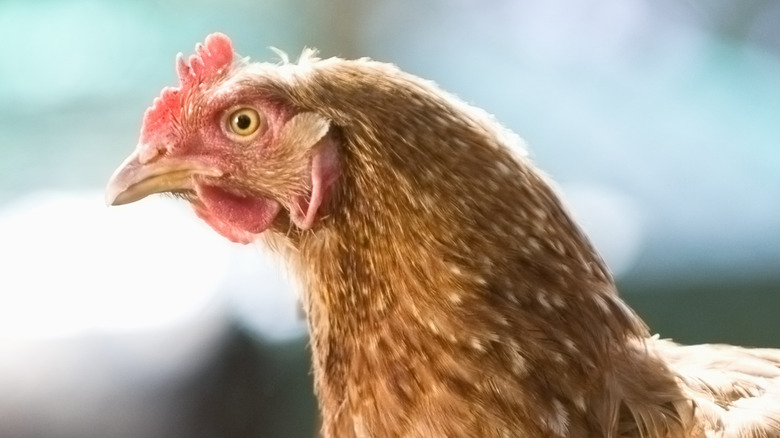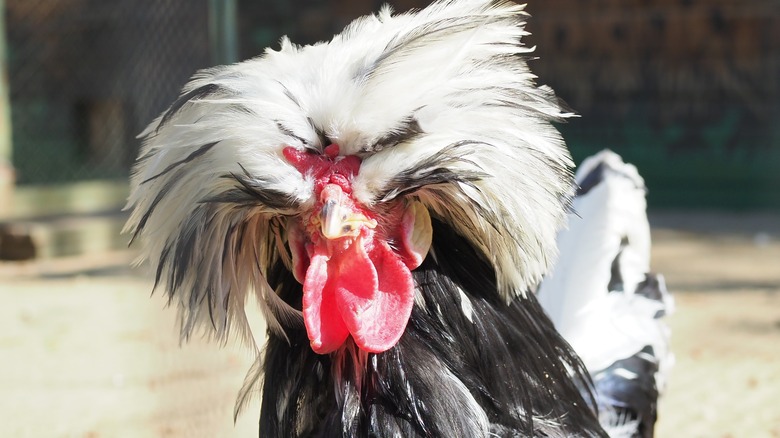Chickens' Earlobes Contain A Hidden Message About The Eggs They Lay
Do chickens actually have earlobes? To the casual observer, no, they don't — at least, not in the same way that humans do. But take a closer look under the feathers on the side of a chicken's head, and you'll find the openings to the chicken's inner ears as well as a flap of skin beneath each opening that constitutes the chicken's earlobe, per McGill University.
And those earlobes are highly sensitive indicators of stress and illness as well as of the color of the eggs a hen will produce, according to Cooped Up Life. For example, dry skin or scabs on the earlobes might mean a chicken has an infection or parasite, or that a hen is egg bound — has an egg stuck within it.
As for those eggs: A chicken's earlobes may be red, white, blue, green or iridescent, and the color of the chicken's earlobes usually corresponds to the color of eggs the chicken lays — white earlobes mean white eggs, while dark lobes mean brown eggs. Earlobe color is genetically predetermined, per Cooped Up Life, and while the colors of a chicken's earlobe differ according to its breed, in certain breeds, the earlobe color also varies by sex.
Watch out for pale or purple earlobes
Thus, as McGill University explains, if a chicken is of the Araucana breed, it will have pale green or blue earlobes, and its eggs will be that same color. If a chicken is of the Rhode Island Red breed, it will have white or red earlobes, scientists found in a 2016 study (per BMC Genetics, posted at the National Library of Medicine).
However, the earlobes of a chicken are full of blood vessels, so if blood flows into or away from the earlobe tissue, a chicken's ear color can change slightly. Pale earlobes are sometimes a sign of stress, according to Cooped Up Life, while purple or blue earlobes may be a sign of heart problems.
While genetics determines earlobe color, the actual coloring process is governed by porphyrins — a class of pigments which includes heme and chlorophyll — that appear when the hemoglobin in red blood cells breaks down (per McGill University).
What human meddling hath wrought
If chicken earlobes strike you as a little bit funny-looking, blame humans. As Hendrix Genetics observes, the modern-day chicken earlobe has developed over generations of selective breeding by humans for particular types of chickens.
There are hundreds of different breeds of chickens around the world, according to Wired. And the wide variety of types that exist today — from fuzzy chickens to more dignified chickens to the White Crested Black Polish chicken (above), which looks a bit like a masked reveler who just stumbled out of a costume ball — are the end result of domestication and Darwinian meddling by humans.
Thus, instead of predators like wolves deciding which birds survive to pass on their genes, other predators — humans — have bred the birds for qualities like prolific egg-laying or outsized body parts. It's a sad story for chickens where factory farming is concerned, but for people who keep chickens as pets, chicken earlobes are something to keep an eye on — both as predictors of egg color and as an early warning system for the chickens' overall health.


